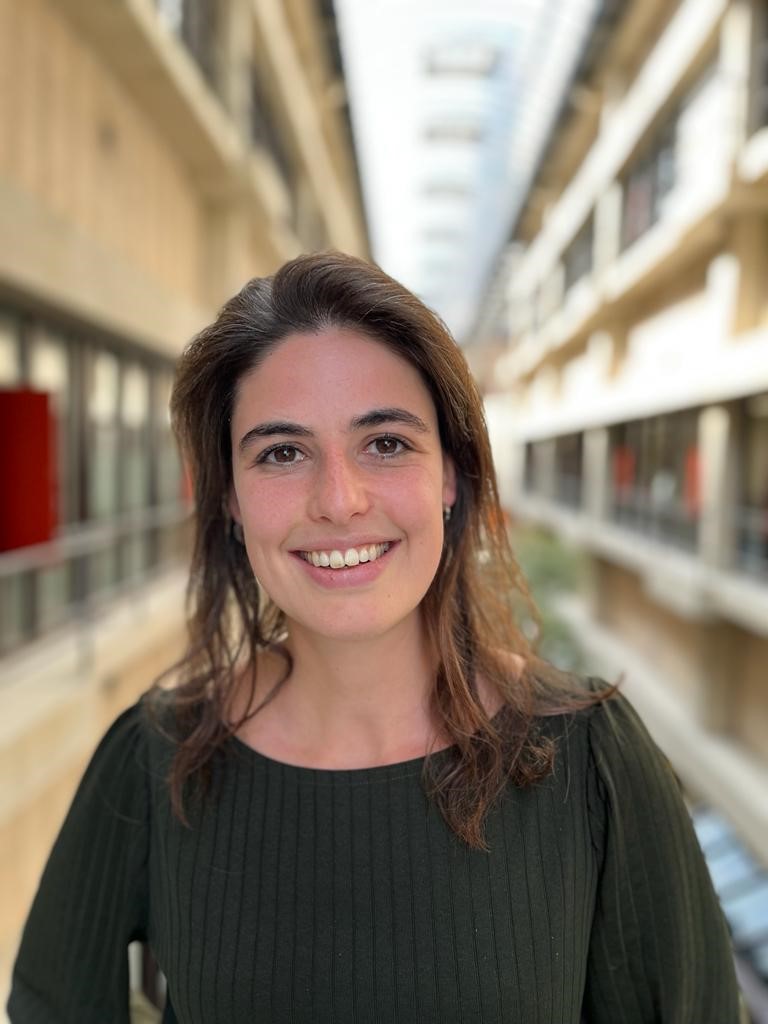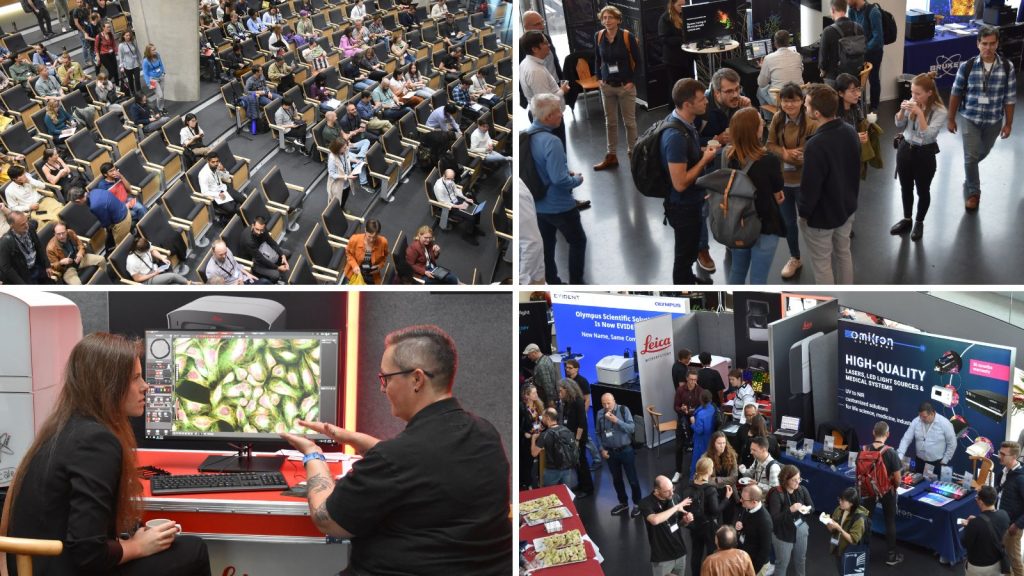Five takeaways from ‘Seeing is believing’ 2023 by the event reporter Vera Janssen
By Vera Janssen, PhD student, Vascular Microenvironment and Integrity lab , Amsterdam University Medical Centers, Netherlands
A day in the life of a biologist sometimes resembles that of a detective. It is a constant quest for reality. To figure out what really happened, is happening, or even predict what will happen, both biologists and detectives require tools that only reveal a small part of the full story. For detectives, fingerprints, forensics and witness accounts provide different clues. For biologists, we have a variety of imaging tools to untangle our molecular clues. However, none of these tools can pool the clues sufficiently to help us solve our mysteries to obtain a complete biological picture. This is one of the main challenges of biology today: how to observe true reality at all biological scales simultaneously? Observing biological reality has been limited by size, resolution, dynamics and speed, signal, identity, and function. Originally, addressing one of these problems used to compromise on one of the others, increasing size would often limit potential resolution or increasing resolution would come at the cost of dynamics.

About me: I’m Vera Janssen, a PhD student at the Amsterdam Medical Centre in the Netherlands. In 2019 I visited the conference ‘Seeing is Believing’ as a graduate intern and this experience opened my eyes to the captivating power of microscopy to enable our understanding of the processes of life across scales.
I was very happy to return this year as a conference reporter.
The meeting kicked off with a workshop from Zeiss after which the meeting was in full swing. I enjoyed seeing the recent developments in light sheet microscopy and volume electron microscopy. These techniques really showcased how we are getting close to integrating knowledge obtained by fixed imaging methods with fluorescence live microscopy.
This year’s EMBO | EMBL Symposium, ‘Seeing is believing: imaging the molecular processes of life’, looked at how we currently can surpass one problem at a time and address multiple simultaneously. Through interdisciplinary thinking and technology developments, multiple research groups across the world are currently allowing the movement of imaging technologies across biological scales and making them available to the research community.
Here are five topics that explored ways to maximise what we can learn from different kinds of imaging:
- Electron microscopy steps up sample size
Electron microscopy (EM) is known to deliver very high resolution, detailed information on very, very small samples. Multiple talks at this year’s conference showcased how volumetric EM is gaining traction in visualising increasingly larger samples without compromising on resolution. Using serial block-face scanning EM, a combination of an EM microscope and microtome that slices the sample after every image, or focused ion beam scanning EM, that combines a scanning electron microscope with a focused ion beam , scientists have been able to view the 3D ultrastructure of cells and tissues through continuous depths of at least 4 micrometre. By employing both fluorescence (super-resolution) microscopy with this volumetric approach, scientists can then identify large 3D EM datasets of a cell and correlate this with protein localisation. Additionally, other data processing advancements are allowing researchers to extract much faster, more meaningful parameters for these 3D models. - Being at the right place, right time for RNA translation
One of the challenges in microscopy is to capture molecular signals to understand biological function. RNA is a fascinating molecule that is transcribed, moves across the cell, and is then translated to form a new protein. Microscopy can help us localise the RNA in fixed samples and detect proteins, but it cannot observe the location and dynamics of RNA molecules during translation. In specific contexts, such as viral infections, our techniques have been too slow or the signals too dim to detect single RNA molecules before they multiply. Two labs harnessed the power of a molecular tagging system called SunTag. With this method, they could quickly label newly translated proteins and detect RNA replication in real-time. This allowed one lab to study the earliest steps of viral infection and the other to study the detailed localisation of newly translating RNA molecules. - Light-sheet microscopy that’s bigger, faster, better
Light-sheet microscopy, a method renowned for imaging relatively large tissues, such as embryos, organoids, and even zebrafish, while keeping them alive has continued to expand. This year’s talks showed how to build your light sheet microscope to image either multiple samples simultaneously or to image developing zebrafish embryos at the organismal scale e without losing resolution at cellular scales, allowing them to visualise single cell dynamics over time across the entire developing embryo. With this new information, we also need new ways to analyse data across enormous datasets. Consequently, other talks addressed new ways to extract meaningful information. - A way to learn more about protein signalling from the membrane
Cells come in various shapes and sizes, and they have protrusions and pockets in various places, each providing different clues into cellular processes. It was commonly thought that signalling proteins are ‘just’ located in the cytoplasm or on the membrane, but recent research presented at the conference showed that the specific arrangement and organisation of membrane structures and proteins within a small region of a cellular membrane can be hotspots to accumulate specific signalling proteins. The speaker used light-sheet microscopy with advanced molecular modelling to show how a cell’s surface can be mapped over time. - A new wave of biological sensors.
Biosensors can provide real-time or specific information about various cellular and molecular events, making them invaluable in the field of microscopy. One talk specifically discussed a genetically encoded sensor for Piezo1, a newly discovered mechanically sensitive ion channel that has been associated with stress. This sensor is able to deduce when Piezo1 is activated when cells are specifically experiencing mechanical stress. Furthermore, researchers used the sensor in cell cultures but also mapped the activity of the Piezo channel in the beating heart of the zebrafish, upgrading its use across biological scales.
Digging deeper into cryo-EM
If you want to take a deeper dive into imaging and some of the cryo-EM imaging technologies also presented in the ‘Seeing is believing’ symposium, EMBL will host the ‘Cryo-EM in academia and industry’ workshop on 29-31 January 2024.
This in-person and virtual workshop aims to bring academic and industrial cryo-EM communities together to evaluate how the cryo-EM ‘resolution revolution’ has progressed in the past 10 years and build upon a first workshop held in 2019. Showcasing high-quality research from academia and industry, the meeting will provide updates on recent and ongoing methodological developments, such as the integration of cryo-ET and cryo-EM with complementary imaging techniques, e.g., imaging across scales as well as other omics technologies, such as proteomics, genomics, and metabolomics. The integration of cryo-EM in the drug-discovery workflow will also be examined. For more information and to register, visit this link.

Generally, the atmosphere was exciting, friendly and welcoming. I enjoyed seeing old friends and getting to meet new people. We enjoyed the dinner at the Heidelberg castle on Friday evening with great views and amazing company.
The EMBO | EMBL Symposium ‘Seeing is believing: imaging the molecular processes of life’ took place between 4-7 October 2023 in Heidelberg, Germany.
Did you know that you can become an event reporter and receive a conference fee waiver in exchange? Find out how to do that by visiting our Become an event reporter page.